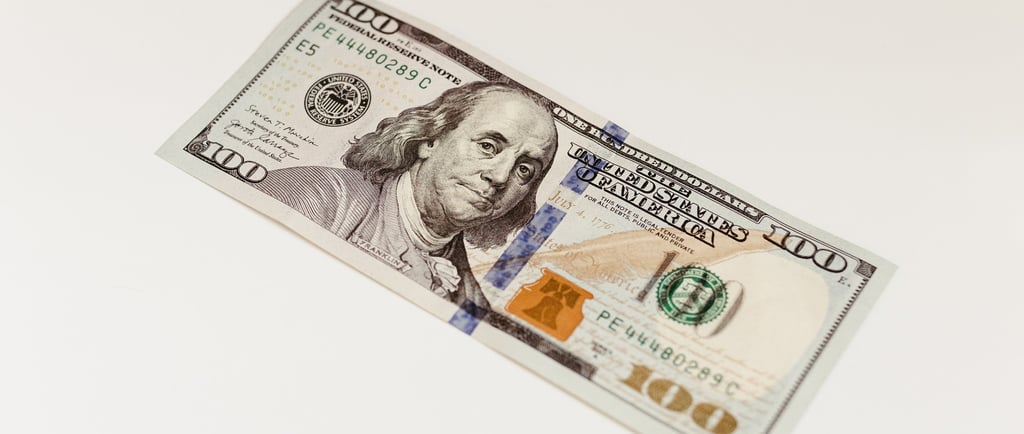YOU DON'T NEED A BUDGET - BUT YOU DO NEED A PLAN
Saving towards your financial goals without having to mentally keep track of how much you can spend each month
Etinosa Agbonlahor


Budgeting is hard. 1 out of 3 Americans report not using a budget, many who do set budgets don’t stick with them. For many of us, budgeting is like attempting to start and stick with a diet, we know we’ll eventually fall off the plan, it’s just a matter of when. It’s hard to set arbitrary restrictions on ourselves and then have the strength to follow those restrictions.
Behavioral economists and psychologists have found that we very often overestimate our future abilities and our willpower to stick with a plan. Just as we eventually reach for that pizza slice despite being on a diet, we eventually spend above our budget, or use our “grocery” budget for drinks with co-workers and then scramble to pay for groceries using money from another part of our budget, essentially undermining the point of the budget in the first place.
I’ve always hated traditional budgets. Money is fungible. Vacation money is the same as grocery money and separating them in a budget doesn’t change the fact that I can spend the money in the same way. Since I don’t want to have to keep track of multiple categories and budgets, I realized that the best way for me to have a financial plan was to make it as simple, automatic and painless as possible. What I call my "no-budget" plan.
The “no-budget” method is cobbled together from many different sources including reddit forums, personal finance guides, behavioral economics and psychology. The main idea behind the no-budget method is setting a solid financial plan that I only need to check on once or twice a year, while building an emergency fund, saving for a new apartment, investing, or doing any other thing with my money that is important to me. It relies on the principles of inertia, automation, and reducing complexity.
Step 1. Review financesAt the start of each year, I review my finances for last year. I look through how much I spent on necessities and fixed expenses such as gas, groceries, insurance, rent, and so on each month. Fixed expenses could also include gym memberships, or monthly donations. I make note of irregular expenses (such as car registration and taxes) that only happen once or twice a year. Credit card and bank statements are especially helpful for this process.
Once I know what my expenses are, I add ~10% of that amount to pad it out and deduct it from my monthly net income. The amount left is my actual income. That's what I have to save, invest, and spend each month.
Step 2. Plan
The beauty of this plan is that my savings, investing, bills, and so on happen automatically—as long as I take a few minutes to set them up that way.
First, I decide what I want to achieve financially each year. Your goals will naturally differ, for example, you might aim to save $5,000 by the end of the year or you might just want to pay $100 more each month towards your debt than you did last year. I use my net income to figure out how much to save/invest each month to help achieve my goals. If I for example, have $1,000 net income, I might decide to put $300 each month in my emergency funds account to help me save $3,600 by the end of the year.
Step 3. Automate
This is the more effective part of the “no-budget” method. I set up my savings and investment accounts to automatically remove the exact sum I've decided on at the start of each month (or twice a month to soften the pain of money leaving my checking account) and move them into my savings and investment accounts. You can set up these automatic transfers to happen indefinitely, or as often as you’d like until a set date.
Step 4. Use calendar
I sometimes put the dates those transfers will happen as events on my calendar, with the exact amount so that I get multiple notifications (both from my banks telling me they’re transferring money from one account to the other, and from my calendar reminding me the transfer is happening).
I also note my irregular expenses from step 1 and put them on my calendar. If I have a car registration due in October, I make an event in your calendar that reads “$175 Car Registration.” So in October I'll remember to tweak my plan to account for this irregular expense, if necessary.
Then I can avoid detailed budgets and such over the next few months knowing everything is happening as I want it to, without any more effort on my part.
Caveats
This method is a rudimentary way to set up an automated budget that will have you saving towards your financial goals without having to mentally keep track of how much you can spend each month. If you earn money on a freelance basis, you might more actively go into your checking account regularly and transfer a predetermined amount to your savings and investments, or use this method on a monthly basis instead of yearly. Naturally your goals may change throughout the year, and you can always go into your accounts and tweak how often you’re saving, how much you’re saving, and so on.
The ultimate point is that everything happens automatically and that you never have to try to restrict yourself, the most important parts are done automatically leaving you with whatever you have in your account to spend.
The information above is general in nature and does not take into account your personal situation. You should consider whether the information is appropriate to your needs, and where appropriate, seek professional advice from a financial adviser.
©Etinosa Agbonlahor | 2025
